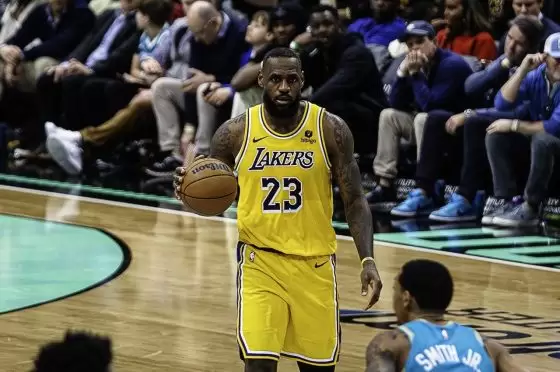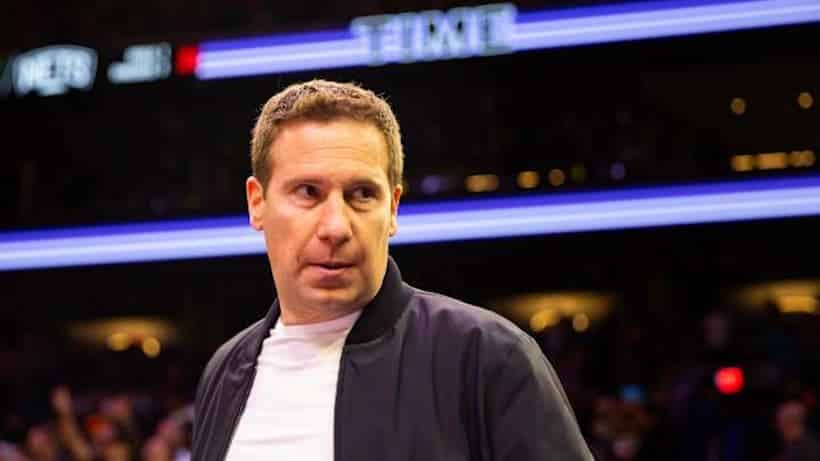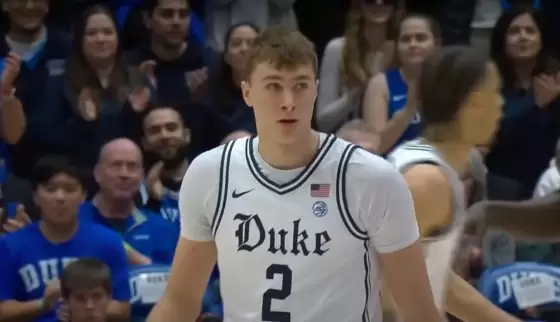#1 – Bench winning minutes
Against the best team in the East, the Celtics won the minutes without their starting five. The shooting from Payton Pritchard and Sam Hauser, combined with the size of Luke Kornet and Al Horford, made the difference the Celtics needed to take control of the game.
The Cavaliers’ bench, led by Georges Niang and Sam Merrill, couldn’t keep up offensively and failed defensively. While the Celtics’ bench scored 29 points and delivered 8 assists, they also managed to slow down the Cavaliers’ scoring. Using a double-big lineup in the first half with Horford and Kornet, the Celtics generated turnovers and transition opportunities.
Boston’s lack of depth was often a hot topic of discussion last year. Yet, this season, the Celtics’ bench has performed better than expected, thanks to Payton Pritchard’s improvements and Luke Kornet’s offensive growth. At the same time, Horford continues to impact the game on both ends.
The Celtics will need this group to stay healthy because, in high-level games like this, the difference can come during the minutes when the bench players take over.
#2 – Porzingis’ defensive masterclass
With Kristaps Porzingis on the floor, the Cavaliers scored only 102 points per 100 possessions, far below their 123 offensive rating this season. The Latvian big man stepped up in a major way. He slowed down Evan Mobley (7 points on 24% true shooting) and disrupted the Cavaliers’ efficiency at the rim. Cleveland finished with a 55% field goal percentage at the rim last night, well below their season average of 67%.
As Jayson Tatum matched up with Jarrett Allen, Porzingis was able to stay near the rim and provide help when needed. Evan Mobley, unlike Alperen Sengun, wasn’t able to post up and dominate Porzingis physically. As a result, the Cavaliers struggled to attack him. Perhaps they could have used Mobley’s screening game more often to bring Porzingis higher on the floor and away from the rim.
Porzingis also had active hands in the passing lanes, anticipating where the ball was going and generating turnovers. His length and basketball IQ don’t just help at the rim—he can be a major disruptor in passing lanes too. In the video below, Porzingis reads the play and knows where Garland is about to send the ball, as this is a classic action from the Cavaliers this season:
Porzingis’ defensive impact since his return has been tremendous. When he is on the floor, the Celtics allow just 58% efficiency at the rim, one of the best rim-protection impacts in the league.
#3 – 9/29 from mid-range
The Cavaliers are also an elite rim-protection team, and they were able to limit the Celtics’ rim pressure. Last night in Cleveland, Joe Mazzulla’s team took 29 mid-range shots, including 15 from long mid-range. This is one of the highest mid-range volumes of the season for the Celtics and confirms a recent trend: Boston is leaning more toward the mid-range.
The issue is that many of these were contested mid-range shots, and the Celtics struggled from that area. The Cavaliers’ length bothered Porzingis’ post-up game, preventing him from generating the usual easy points. On top of that, Jaylen Brown had an off night, playing fewer than 30 minutes while picking up 5 fouls and 5 turnovers. The Celtics’ usual mid-range assassin couldn’t help, which may explain why they struggled in that zone.
This mid-range volume could be concerning because it doesn’t align with the Celtics’ usual offensive DNA. It’s hard to believe the Celtics have intentionally shifted toward a less efficient shot profile, so the question remains: what solutions can they find to generate more shots at the rim? Will there be a trade? A change in the starting lineup?
#4 – Dominating the glass
One of the solutions the Celtics found was sending two bigs against the Cavaliers’ bench lineup. Whenever Jarrett Allen or Evan Mobley was out, the Celtics played with two bigs and sent multiple players to crash the offensive glass.
Thanks to this approach, the Celtics grabbed 33% of their missed shots and were able to generate more shot attempts than Cleveland. Additionally, after an offensive rebound, the ball was closer to the rim, allowing the Celtics to finally attempt shots in the paint—an area they initially struggled to attack.
#5 – Luke Kornet’s short roll
Speaking of double-big lineups, Luke Kornet’s short-roll play was key to getting the offense going in the first half. His screens forced the Cavaliers’ defense to commit two defenders to the ball-handler momentarily, allowing Kornet to operate in a 4-on-3 situation.
Following a Kornet screen, the Celtics’ players briefly formed a diamond shape—two shooters on the wings and a player in the dunker spot. This 4-on-3 situation stretched the defense, forcing the Cavaliers to make a choice and leave someone open.
This is why Luke Kornet has played so much this season. He has become a great connector, helping the offense flow when opponents aggressively pressure the ball-handler.
#6 – Boston vs. the Cavs’ zone
Like the 76ers in the previous game, the Cavs also tried a zone defense to slow down the Celtics. This time, Boston was ready for it. One of the keys to breaking a zone is initiating offense quickly. Since a zone requires defenders to be properly positioned to cover space effectively, pushing the pace can prevent them from setting up properly.
Once the pace is established, movement is crucial. A zone defense moves as a unified block, so forcing it from one side to the other can disrupt its structure until it breaks. Another way to break a 2-3 zone is by attacking the middle, where no defender is initially stationed. By placing the ball in this gap, one defender is forced to leave his position, breaking the alignment.
The Celtics executed these basic principles, keeping their offense fluid against the Cavaliers and maintaining their lead until the final buzzer.
#7 – Adapting to the Jrue Holiday treatment
In the second half, the Cavaliers defended Jrue Holiday as a non-shooting threat, putting Jarrett Allen on him. This forced the Celtics to adjust, but they adapted quickly. An early example came when Jayson Tatum recognized a soft hedge on the ball and passed to the side instead of immediately hitting the roller.
Still, it was tough for the Celtics to find offensive rhythm with Holiday on the floor. Since he wasn’t being guarded off-ball and struggled to create with the ball in his hands, the Celtics closed the game without him. Jaylen Brown was also sidelined with 5 fouls, leaving Al Horford and Payton Pritchard on the floor for the closing minutes.
#8 – Tatum and Porzingis to close the third
To close the third quarter, the Celtics went old-school and spammed the pick-and-roll with Jayson Tatum and Kristaps Porzingis… and it WORKED. Over the final five minutes of the quarter, the Celtics scored 18 points using this action.
Because of Tatum and Porzingis’ ability to exploit mismatches, shoot, or drive, this pick-and-roll is nearly impossible to stop. They also mixed in fake handoffs and misdirection to keep the defense guessing.
This increased reliance on the pick-and-roll could open up new possibilities for the Celtics’ offense moving forward.
#9 – Derrick White to close the fourth
After Tatum and Porzingis closed the third, Derrick White stepped up in the fourth. With Jaylen Brown fouled out and Jrue Holiday sidelined due to the Cavaliers’ defensive scheme, White took over.
In the final minutes, he scored 8 quick points and sealed the game. His jumpers gave the Celtics the final push they needed. Alongside Tatum, he controlled the clock, slowing the pace to suffocate the Cavs’ defense late in possessions. Cold-blooded.
#10 – Celtics are traveling well
The Celtics are now 20-6 on the road, handing Cleveland just their fourth home loss of the season. While Boston has had some struggles at home, they continue to dominate away from TD Garden. This win tightens the gap between the Celtics and Cavaliers in the standings.






